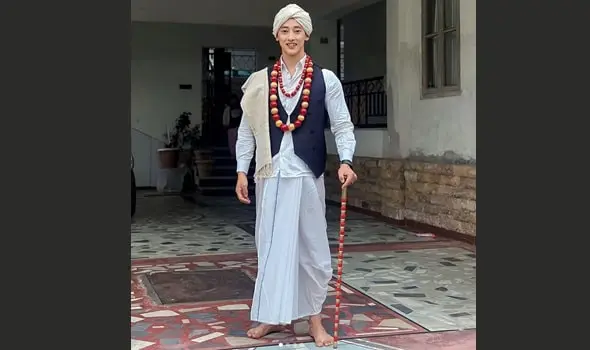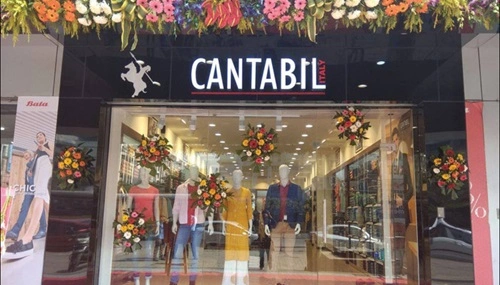Meghalaya is one of the magnificent states on the northeastern coast of India. As the name goes, Meghalaya translates to “the abode of the clouds.” Many legends state there were 16 families. Of these, 9 were from heaven, and seven were from earth. Since then, Meghalaya has been home to tribes like Jaintia, Khasi, and Garo.
One of the oldest and primary sources of income in Meghalaya is weaving. We can say that the Garo tribe community has topped the list with their multi-talented and skilled weavers. All these tribes show us a unique way of living through their traditional attires. It is observed that even today, people in Meghalaya stick to their roots. In this article, we will cover the conventional dress of Meghalaya for Men and Women.
Traditional Dress of Meghalaya Men
However, the traditional dress of Meghalaya Men varies from clan to clan. The attires of the Jaintia tribe and the Khasi tribe are similar. A long, unstitched dhoti is wrapped around the waist region. It is then complimented with an embedded jacket or shirt. On occasions like Ka Pom-Blang Nongkrem and Ka Shad Suk Mynsie Meghalaya, men are seen wearing a silk turban and carrying a swear in one hand.

While the Garo tribe wears a handwoven loincloth, these traditional male attires are restricted to festivals and special events. But the men can be seen blaring their tradition with pride.
Traditional Dress of Meghalaya Women
1. Jainsem
Jainsem is an ancient traditional dress worn by Meghalayan women. This dress is made of mulberry silk, a local specialty of the Meghalaya state. Right over this costume, they wear a tap-moh khlieh made of cotton shawls.
2. Kyrshah
During the harvest season, the women in the Jaintia tribe mantle their heads with a chequered cloth known as Kyrshah. They cover their body with a beautiful velvety blouse and an ankle-length sarong or bottom Thoh Khyrwang. Women wear silver and gold ornaments during the festive season to enhance the overall look. Most womens from the Jaintia and Khasi communities adorn a gold pendant, Kynjri Ksiar.
3. Jainkup
Elderly women from the Jaintia clan wear this full-sleeve blouse woolen outfit. This attire is uniquely designed with remarkable lace embroidery all over the neck region. Accessories matching up the traditional dress include red coral and white beads covered with foil, silver or golden crown paired with elegant golden earrings. Many women dancers wear this fabulous attire while performing their traditional art form onstage during the Khasi Festival.
4. Dak Manda
The Garo tribe wears this Dak Manda, a handmade lungi. It is usually wrapped around the waist. However, the dress of the Garo community varies depending on their residence. For example, if the Garo community is living in a densely populated or crowded place, they prefer to wear long cotton dresses.
Simultaneously, those living in the faraway region prefer wearing ‘eking’, a small piece of cloth that is 18 inches long, about 14 inches broad, and tied around the waist. This community likes wearing ornaments like Nadongbi nr sisha, a brass earring, and Natapsi on the upper earlobe. Ripok or Necklaces is a long barrel-shaped bead made of red, silver, brass or cornelian glass. All these ornaments are worn on their special occasions.
Traditional Wedding Dress of Meghalaya For Men and Women
Brides wear a Jainsem or a Dhara, a saffron or yellow-colored mulberry silk. The attire is paired with silver and gold crowns with a peak attached to the back. Two contrasting fabrics are worn on each shoulder. The groom wears a Jymphong, which is a sleeveless jacket. It is embedded with a symbolic red cock motif with a V neckline, yellow lines and floral motifs.
This coat is tied with a Chinese frog fastener. It is deep blue and decorated with golden or silver tassels. The waist is covered with silk designed with golden thread on the borders of Jainboh. For weddings, Khasi men also wear a Jainspong, which is a yellow and red colored turban.
Conclusion
Even though the tribes of Meghalaya may portray different yet unique styles in their traditional dressing sense, all this community lives in harmony despite the diversity in their attires. The people of Meghalaya take prestige in their rich cultural heritage. Their dressing style, outfits, and accessories may differ, but they are still stunning and marvelous. In modern times, Meghalaya men are restricted to outfits only for special occasions. In contrast, the women still hold on to their ancient and traditional ways of dressing.

